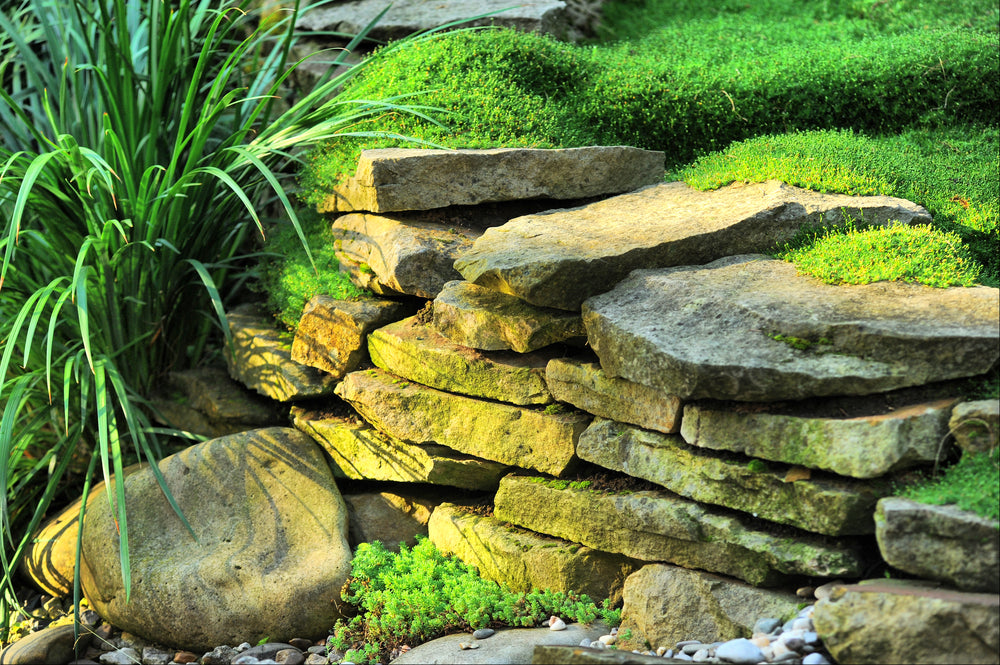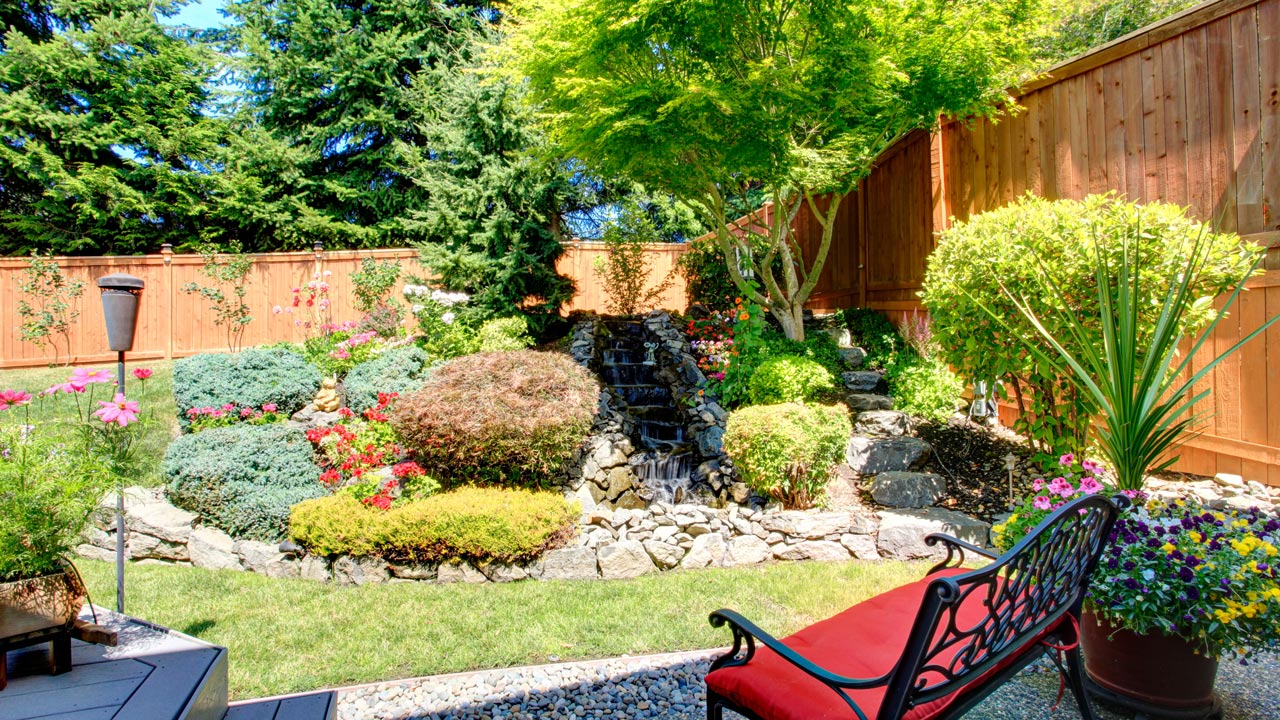A Practical Guide to Hardscaping from Landscaping St. Louis MO
Discover Ingenious Methods to Boost Your Home's Visual Through Landscaping
Discovering ingenious landscape design techniques can transform a residential or commercial property's visual and functionality. By incorporating indigenous plants and hardscaping, home owners can create lasting and organized environments. Additionally, the thoughtful use of shade concept and water attributes enhances visual charm. As outside areas end up being expansions of the home, recognizing exactly how to combine these aspects efficiently is vital. This conversation will reveal techniques that raise both elegance and use in outside setups.
Accept Native Plants for Sustainability
As environment modification and urban development remain to affect neighborhood ecological communities, embracing native plants for sustainability has ended up being progressively vital. Indigenous plants are well-adapted to neighborhood environments, dirt types, and wild animals, requiring much less water and less chemical inputs compared to non-native species. Their development supports local biodiversity, fostering environments for pollinators, birds, and various other wild animals. By integrating native vegetation into landscapes, homeowner can develop vibrant, lasting settings that reflect the area's natural beauty.Furthermore, native plants improve dirt health by promoting useful bacteria and decreasing disintegration. They also add to carbon sequestration, helping alleviate climate change impacts. The visual allure of native gardens can be just as charming as traditional ornamental layouts, showcasing seasonal blossoms and varied structures. Ultimately, embracing native plants not just supports eco-friendly balance yet also enhances the area's visual landscape, motivating a much deeper connection to the environment.
Incorporate Hardscaping for Framework and Feature
Hardscaping plays a crucial function in enhancing both the structure and functionality of outdoor spaces - Landscaping St. Louis MO. By picking long lasting products and tactically planning the design, homeowners can create versatile environments that enhance their landscaping. The assimilation of hardscape aspects not just includes visual rate of interest yet additionally serves practical objectives, such as improving availability and managing water drain
Advantages of Hardscaping
While several homeowners concentrate mainly on softscaping components, incorporating hardscaping into a landscape style uses countless advantages that improve both framework and feature. Hardscaping, which includes attributes such as patios, walkways, and preserving wall surfaces, gives a solid structure for exterior rooms. It develops specified locations that boost movement and usability, encouraging outdoor tasks and social gatherings. Additionally, hardscaping can aid manage water drainage, reducing disintegration and promoting healthier plant life. In addition, these functions include aesthetic charm, contributing to the total layout consistency of a property. By balancing softscaping with hardscaping, house owners can produce visually striking landscapes that are not just attractive but likewise functional and sustainable for several years to come.
Materials for Long Lasting Style
Integrating hardscaping not only boosts the visual appeal of exterior rooms however additionally counts greatly on the choice of products that ensure toughness and performance. High-grade concrete, all-natural stone, and block are popular choices for sidewalks, patio areas, and walls, providing a durable structure that endures weather elements and hefty foot web traffic. Compound products use the look of timber without the upkeep, making them appropriate for decking and fencing. In addition, absorptive pavers enable for efficient drainage, promoting ecological sustainability while maintaining architectural stability. Metal accents such as barriers and sculptures can introduce modern panache and resilience. By picking the right products, homeowner can produce visually striking landscapes that stand the examination of time and enhance their exterior living experience.

Preparation Useful Outdoor Spaces
Just how can one effectively plan exterior rooms that stabilize aesthetic appeals with functionality? Incorporating hardscaping elements is important in achieving this equilibrium. Features such as patios, pathways, and keeping wall surfaces not only provide framework but likewise enhance the aesthetic allure of the landscape. By strategically placing these aspects, one can create defined areas for activities like enjoyable, horticulture, or relaxation.Moreover, choosing products that enhance the natural surroundings can boost the total visual. Making use of natural stone or ornamental pavers can incorporate seamlessly with greenery. Furthermore, hardscaping can assist in drainage and soil stabilization, making certain a sustainable outdoor environment. Eventually, thoughtful preparation that incorporates hardscaping with landscape layout leads to inviting, practical outside rooms that accommodate different needs.
Create Multi-Functional Spaces for Outdoor Living
Producing multi-functional areas for outside living improves the use and satisfaction of a landscape. By incorporating exterior dining locations and leisure zones, home owners can optimize their exterior experience. These attentively made rooms advertise social communication while giving tranquil environments for loosening up.

Outside Eating Locations
While numerous home owners look for to enhance their exterior spaces, transforming a backyard right into a practical dining area can elevate both aesthetics and use. Exterior eating locations supply an inviting atmosphere for gatherings, allowing family members and close friends to take pleasure in meals in a natural setting. Including elegant furniture, such as weather-resistant table and chairs, develops a click here to read comfortable experience. Adding functions like pergolas or shade sails can provide security from the elements while providing visual interest - landscaping st louis. Ornamental aspects, such as string lights or lights, can boost setting throughout evening dishes. Furthermore, integrating neighboring planters or garden beds includes plant, producing a natural look. Ultimately, a well-designed outside dining space fosters connection and enjoyment, enriching the overall outdoor living experience
Relaxation Areas
Leisure areas function as crucial parts of exterior living, supplying a peaceful escape where people can loosen up and charge. These areas can be creatively created to integrate different elements that enhance convenience and serenity. Incorporating features such as hammocks, lounge chairs, or outdoor couches welcomes relaxation while adding visual charm. Soft lights options, like string lights or lights, can produce a relaxing environment for evening celebrations. news Furthermore, integrating natural environments such as water attributes, plants, and landscape design can even more boost the atmosphere. By blending capability with appeal, relaxation areas end up being functional areas for reflection, reading, or delighting in quiet minutes with nature, ultimately changing outdoor rooms into welcoming hideaways that accommodate both recreation and social interaction.
Usage Color Concept to Design Vibrant Landscapes
Shade theory plays an essential role in creating dynamic landscapes, as it influences the psychological and psychological actions of viewers. By comprehending how shades interact, landscape designers can develop harmonious atmospheres that evoke specific feelings. Warm shades such as reds and oranges can invigorate a room, making it feel vibrant and welcoming, while cooler tones like blues and greens advertise peace and relaxation.Incorporating contrasting colors can likewise improve aesthetic interest. Designers often use complementary color pattern-- shades opposite each other on the color wheel-- to produce striking focal factors. In addition, using seasonal plants enables a dynamic color palette that alters throughout the year, keeping aesthetic appeal.Moreover, the critical positioning of shades can guide the viewer's eye through the landscape, producing a sense of flow and unity. Eventually, a thoughtful application of shade theory boosts a landscape, improving its visual and psychological effect.

Apply Water Functions for Tranquility and Allure
Integrating water features right into landscape layout can considerably boost both harmony and visual allure. These aspects, such as ponds, water fountains, or waterfalls, introduce comforting noises and captivating visuals that attract interest and produce a peaceful ambience. The gentle circulation of water can mask unwanted noise, providing a peaceful hideaway from the outdoors world.Moreover, water functions attract wild animals, such as birds and butterflies, improving the community and including dynamic life to the landscape. Purposefully put, they can work as focal points, guiding the visitor's eye and improving the overall structure of the outside space.In addition to visual advantages, water functions can additionally improve the microclimate, offering cooling results during heat. When designed thoughtfully, these installments balance with bordering plants and hardscapes, creating a cohesive and welcoming setting. Ultimately, water functions are a flexible device in landscape design, fostering appeal and peace.
Experiment With Upright Horticulture Methods
Just how can upright gardening change minimal areas right into lush, eco-friendly retreats? see this here This ingenious strategy utilizes wall surfaces, fencings, and trellises to develop a dynamic tapestry of plant, also in constrained locations. By maximizing vertical room, property owners can cultivate a range of plants, from natural herbs and veggies to ornamental flowers, boosting both aesthetic appeal and functionality.Vertical yards not only provide a sensational aesthetic effect however likewise improve air quality and promote biodiversity. They can be customized to match numerous style styles, from contemporary minimal to rustic beauty. Additionally, incorporating modular planters enables very easy reformation and seasonal updates, making sure the garden remains dynamic throughout the year.Choosing the right plants is essential; picking those that grow in upright arrangements will generate the ideal outcomes. In general, experimenting with upright horticulture methods can effectively redefine exterior areas, turning them right into green shelters that invite leisure and satisfaction.
Use Lighting to Boost Atmosphere and Safety
While reliable landscaping can change outside spaces, the strategic use lighting plays a vital function in boosting both ambiance and safety and security. Attentively placed exterior lighting can highlight building functions, garden paths, and special plants, creating a welcoming atmosphere. Soft lighting from lights or string lights can evoke a relaxing setting for night gatherings, while spotlighting can highlight focal points such as sculptures or water features.In addition to aesthetic enhancements, lighting significantly adds to security. Well-lit sidewalks and entry factors decrease the danger of accidents, making navigation simpler night. Motion-sensor lights supply an added layer of safety and security by illuminating locations when motion is spotted. By incorporating different lights methods, home owners can achieve a harmonious equilibrium between beauty and performance, making certain that their outdoor spaces stay both aesthetically attractive and safe and secure. Overall, efficient outdoor illumination is an essential part of comprehensive landscape layout.
Often Asked Inquiries
How Can I Pick the Right Plants for My Environment?
Picking the right plants for a specific climate involves researching local weather condition patterns, soil conditions, and native species. Consulting gardening resources and local experts can provide useful understandings into suitable plant choices for optimal development and sustainability.
What Are the Maintenance Demands for Different Landscaping Features?
The upkeep needs for landscape design functions vary extensively. Some plants need normal pruning and watering, while hardscapes demand periodic cleaning and fixings. Comprehending specific requirements guarantees long life and suitable look of each function in the landscape.
How Do I Spending plan for a Landscaping Task?
Budgeting for a landscaping job requires examining costs for materials, labor, and design. st louis landscaping companies. One ought to prioritize demands versus wants, look for numerous quotes, and designate a backup fund for unforeseen costs to guarantee economic expediency
Can I Landscape My Residential property Myself, or Should I Hire a Specialist?
The private contemplated whether to take on the landscape design task individually or employ a professional. Evaluating personal abilities against possible competence, they recognized that each choice carried special benefits and difficulties, influencing their decision significantly.
What Are the Best Times of Year for Landscape Design Projects?
The very best times for landscape design tasks normally consist of early spring and very early autumn. These seasons supply desirable climate condition, enabling plants to establish roots before severe temperatures, guaranteeing a successful and vibrant landscape improvement.